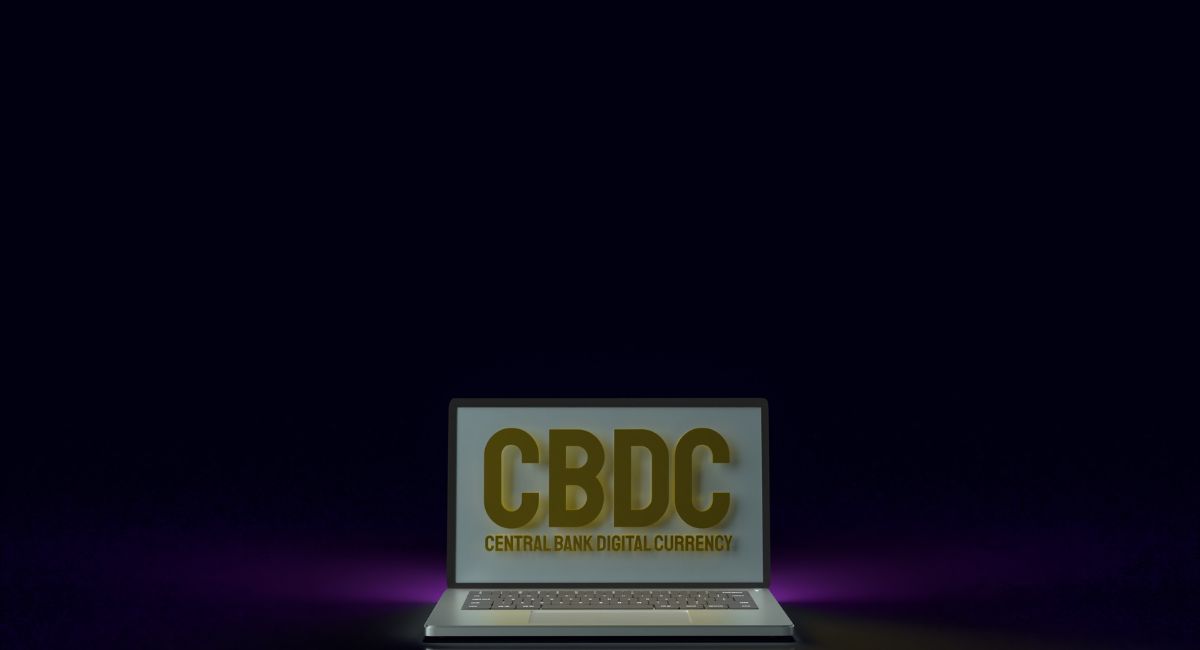Amazing CBDC Use in Retail Payments: A Global Overview In 2024
Central Bank Digital Currencies (CBDCs) are becoming an important part of how we make payments today. They blend the benefits of digital money with the trust of central banks. This article explores how CBDCs are changing retail payments around the world, the factors that influence their use, and the challenges and opportunities they present.
Key Takeaways
- CBDCs offer a new way to make payments, combining the speed of digital transactions with the security of central bank backing.
- Adoption of CBDCs is influenced by how they are designed and how familiar consumers are with current payment methods.
- Countries like China and those in the Euro Area are leading in CBDC trials, showing varying levels of success and consumer acceptance.
- Technological advancements, such as mobile payments, can enhance the adoption of CBDCs by creating a supportive environment.
- Challenges like ensuring everyone can access CBDCs and balancing consumer needs with system stability are key to their successful deployment.
The Role of CBDC in Modern Retail Payments
Understanding CBDC and Its Functions
Central Bank Digital Currency (CBDC) is a new form of money issued by a country’s central bank. It aims to provide a secure and efficient payment method for consumers and businesses. CBDCs can help streamline transactions, making them faster and more reliable. They also offer a way to maintain financial stability in an increasingly digital world.
Comparing CBDC with Traditional Payment Methods
When comparing CBDC to traditional payment methods like cash and credit cards, several key differences emerge:
- Speed: CBDC transactions can be processed almost instantly.
- Cost: Using CBDC may reduce transaction fees compared to credit cards.
- Accessibility: CBDC can be designed to be accessible to everyone, including those without bank accounts.
| Feature | CBDC | Traditional Payment Methods |
|---|---|---|
| Transaction Speed | Instant | Varies |
| Transaction Cost | Lower | Higher |
| Accessibility | High | Moderate to Low |
The Evolution of Retail Payments
Retail payments have changed significantly over the years. From cash to cards, and now to digital currencies, the landscape is evolving. CBDC represents the next step in this evolution, offering a modern solution to meet the needs of consumers today. As technology advances, the way we pay for goods and services will continue to transform, making it essential for central banks to adapt.
The introduction of CBDC could reshape how we think about money and payments, ensuring that everyone has access to a reliable payment system.
Factors Influencing CBDC Adoption
Consumer Preferences and CBDC Design
The design of a Central Bank Digital Currency (CBDC) can greatly affect how much people want to use it. A well-designed CBDC can attract more users. For example, if it combines the speed of card payments with the privacy of cash, it may appeal to more consumers. Here are some key design features that can influence adoption:
- Speed: Quick transactions are essential for user satisfaction.
- Ease of Use: A simple interface can encourage more people to try it.
- Privacy: Many users value their privacy and want to keep their spending habits confidential.
The Impact of Network Effects
Network effects play a crucial role in CBDC adoption. As more people use new payment methods, like mobile payment apps, it becomes easier for others to join in. This creates a snowball effect where the popularity of these methods increases. A recent survey showed that countries with higher usage of mobile payments tend to have higher CBDC adoption rates. Here’s a simple table illustrating this:
| Percentage of Mobile Payment Users | CBDC Adoption Rate |
|---|---|
| 0-10% | Low |
| 11-30% | Moderate |
| 31%+ | High |
Legislative and Regulatory Considerations
Laws and regulations can significantly impact how quickly CBDCs are adopted. Governments need to create rules that encourage the use of CBDCs while ensuring safety and privacy. Some important considerations include:
- Consumer Protection: Safeguarding users from fraud and misuse.
- Anti-Money Laundering: Ensuring that CBDCs are not used for illegal activities.
- Merchant Acceptance: Encouraging businesses to accept CBDCs as a payment method.
The success of CBDC adoption relies not only on its design but also on the surrounding legal framework and public awareness.
By understanding these factors, we can better predict how CBDCs will fit into our daily lives and the future of retail payments.
Global Case Studies on CBDC Implementation
CBDC in the Euro Area
The Euro Area is actively exploring the implementation of a Central Bank Digital Currency (CBDC). The European Central Bank (ECB) is conducting research and trials to understand how a digital euro could enhance the payment system. Key points include:
- Aiming to improve payment efficiency.
- Ensuring consumer protection and privacy.
- Supporting the digital economy.
China’s Digital Yuan Initiative
China has taken significant steps with its digital yuan, known as e-CNY. This initiative is designed to modernize the payment landscape. Key features include:
- Integration with existing payment platforms.
- Enhanced tracking of transactions for better regulation.
- A focus on financial inclusion for unbanked populations.
| Feature | Digital Euro | Digital Yuan |
|---|---|---|
| Consumer Protection | Yes | Yes |
| Integration with Apps | Planned | Active |
| Financial Inclusion | Yes | Yes |
Lessons from Emerging Markets
Emerging markets are also experimenting with CBDCs. Countries like Jamaica and Nigeria have launched their own digital currencies. These initiatives aim to:
- Increase access to financial services.
- Reduce transaction costs.
- Foster economic growth.
The success of CBDCs in these regions shows that digital currencies can drive economic change and improve the lives of citizens.
In summary, the global landscape of CBDC implementation is diverse, with each region tailoring its approach to meet specific needs and challenges. Understanding these case studies can provide valuable insights into the future of retail payments.
Technological Innovations and CBDC
Integration with Mobile Payment Systems
The rise of mobile payment systems has changed how people handle money. CBDCs can seamlessly integrate with these systems, making transactions faster and easier. This integration can lead to:
- Enhanced user experience
- Increased transaction speed
- Broader acceptance among merchants
Security and Privacy Concerns
As digital currencies grow, so do worries about security and privacy. CBDCs must ensure that users’ data is protected. Some key points include:
- Robust encryption methods
- Regular security audits
- Clear privacy policies
The Role of Blockchain Technology
Blockchain technology is a game-changer for CBDCs. It offers a transparent and secure way to record transactions. In fact, blockchain is seen as a trillion-dollar market opportunity. This technology can help:
- Reduce fraud
- Improve transaction speed
- Lower costs associated with traditional banking
The future of money is being shaped by technology, and CBDCs are at the forefront of this change.
By focusing on these innovations, CBDCs can enhance retail payments and provide a more efficient financial system.
Challenges and Opportunities in CBDC Deployment
Overcoming Adoption Barriers
Adopting a Central Bank Digital Currency (CBDC) comes with its own set of challenges. One major hurdle is public awareness. Many people are not familiar with CBDCs, which can lead to hesitation in using them. Here are some key barriers to consider:
- Lack of understanding about how CBDCs work.
- Concerns over privacy and security.
- Fear of losing access to traditional banking services.
Ensuring Financial Inclusion
CBDCs have the potential to promote financial inclusion by providing easier access to banking services for unbanked populations. However, achieving this requires careful planning. Some strategies include:
- Designing user-friendly interfaces.
- Offering educational programs about digital currencies.
- Collaborating with local businesses to encourage usage.
Balancing Consumer Demand and System Stability
Finding the right balance between consumer demand and the stability of the financial system is crucial. If too many people switch to CBDCs, it could destabilize traditional banks. This is especially important in countries with fragile financial systems. To mitigate risks, central banks must:
- Monitor the flow of funds between CBDCs and traditional banks.
- Implement robust regulatory frameworks.
- Ensure that CBDCs complement existing payment systems rather than replace them.
The successful deployment of CBDCs hinges on addressing these challenges while seizing the opportunities they present for a more inclusive financial future.
| Challenge | Description |
|---|---|
| Public Awareness | Many people lack knowledge about CBDCs, leading to reluctance in adoption. |
| Privacy Concerns | Users worry about how their data will be used and protected. |
| Financial Stability | A sudden shift to CBDCs could destabilize traditional banking systems. |
CBDC and Cross-Border Payments
Enhancing Cross-Border Transactions
Central Bank Digital Currencies (CBDCs) have the potential to transform cross-border payments. By reducing costs and improving efficiency, CBDCs can make international transactions faster and more reliable. This is especially important in a global economy where businesses and consumers often need to send money across borders.
Reducing Settlement Risks
One of the main advantages of CBDCs is their ability to lower settlement risks. Traditional cross-border payments often involve multiple banks and intermediaries, which can lead to delays and increased costs. With CBDCs, transactions can be settled directly between parties, minimizing the number of intermediaries involved.
International Collaboration and Standards
For CBDCs to be effective in cross-border payments, international collaboration is essential. Countries need to work together to establish common standards and regulations. This will help ensure that CBDCs can be used seamlessly across different jurisdictions.
The future of cross-border payments may rely heavily on the successful implementation of CBDCs, as they promise to enhance efficiency and transparency in transactions.
Summary of Benefits
- Cost Reduction: Lower fees compared to traditional methods.
- Speed: Faster transaction times.
- Transparency: Clearer tracking of transactions.
In conclusion, CBDCs hold great promise for improving cross-border payments, making them more efficient and accessible for everyone involved.
Future Prospects of CBDC in Retail Payments
Potential Impact on the Banking Sector
The introduction of CBDCs could significantly change how banks operate. Banks may need to adapt to a new environment where digital currencies coexist with traditional money. This shift could lead to:
- Increased competition among payment systems.
- Changes in how banks manage liquidity.
- New opportunities for financial services innovation.
CBDC and Digital Financial Inclusion
CBDCs have the potential to enhance financial inclusion by providing access to banking services for unbanked populations. Some key benefits include:
- Lower transaction costs.
- Easier access to digital wallets.
- Enhanced security for transactions.
Predictions for CBDC Adoption Rates
While the future of CBDC adoption is uncertain, several factors will influence its success:
- Consumer trust in digital currencies.
- The effectiveness of CBDC design in meeting user needs.
- Regulatory frameworks that support innovation.
The future landscape may see the coexistence of FPS, e-money, and CBDC in many payment systems worldwide. This could lead to a more efficient and inclusive financial ecosystem.
Conclusion
In summary, the future of retail payments could be significantly shaped by Central Bank Digital Currencies (CBDCs). Our research highlights that how CBDCs are designed, how much people know about them, and the rise of new payment technologies are key factors that could influence their acceptance. While many people might be open to trying CBDCs, they may still stick to traditional methods like cash and cards due to the effort needed to switch. This shows that understanding the costs of adopting CBDCs is crucial. Overall, our findings provide a clear picture of what could drive the use of CBDCs in everyday transactions, helping to guide future strategies for their introduction.
Frequently Asked Questions
What is a Central Bank Digital Currency (CBDC)?
A CBDC is a digital form of money issued by a country’s central bank. It works like regular cash but exists only online.
How does CBDC differ from traditional payment methods?
CBDC is backed by the government, making it safer than some digital payment methods. It aims to combine the benefits of cash with the convenience of digital payments.
What factors affect how people will use CBDC?
People’s choices depend on how easy CBDC is to use, their personal preferences, and how well it fits with existing payment methods.
Can CBDC help with international payments?
Yes, CBDC can make cross-border transactions faster and cheaper by reducing the number of banks involved.
What challenges does CBDC face?
Some challenges include getting people to adopt it, ensuring everyone has access to it, and keeping the banking system stable.
What might the future hold for CBDC in retail payments?
CBDC could change how we pay for things, making payments easier and more inclusive, especially for those who currently lack access to banking.
Stay informed with daily updates from Blockchain Magazine on Google News. Click here to follow us and mark as favorite: [Blockchain Magazine on Google News].
Get Blockchain Insights In Inbox
Stay ahead of the curve with expert analysis and market updates.
latest from tech
Disclaimer: Any post shared by a third-party agency are sponsored and Blockchain Magazine has no views on any such posts. The views and opinions expressed in this post are those of the clients and do not necessarily reflect the official policy or position of Blockchain Magazine. The information provided in this post is for informational purposes only and should not be considered as financial, investment, or professional advice. Blockchain Magazine does not endorse or promote any specific products, services, or companies mentioned in this posts. Readers are encouraged to conduct their own research and consult with a qualified professional before making any financial decisions. The featured image used is just a creative depiction of the title and it does not intend to hurt sentiments of any person or institution. If it hurts anyone sentiments, please do not hesitate to reach out to Blockchain Magazine.

 Bitcoin
Bitcoin  Ethereum
Ethereum  XRP
XRP  Tether
Tether  Solana
Solana  USDC
USDC  Dogecoin
Dogecoin  Cardano
Cardano  Lido Staked Ether
Lido Staked Ether  TRON
TRON  Chainlink
Chainlink  Avalanche
Avalanche  Wrapped stETH
Wrapped stETH  Wrapped Bitcoin
Wrapped Bitcoin  Stellar
Stellar  Sui
Sui  Toncoin
Toncoin  Hedera
Hedera  Shiba Inu
Shiba Inu  WETH
WETH  Litecoin
Litecoin  Polkadot
Polkadot  Hyperliquid
Hyperliquid  LEO Token
LEO Token  Bitcoin Cash
Bitcoin Cash  Bitget Token
Bitget Token  Uniswap
Uniswap  Wrapped eETH
Wrapped eETH  USDS
USDS  Ethena USDe
Ethena USDe  Pepe
Pepe  NEAR Protocol
NEAR Protocol  Official Trump
Official Trump  Aave
Aave  MANTRA
MANTRA  Ondo
Ondo  Aptos
Aptos  Internet Computer
Internet Computer  Monero
Monero  Ethereum Classic
Ethereum Classic  Mantle
Mantle  WhiteBIT Coin
WhiteBIT Coin  Bittensor
Bittensor  Cronos
Cronos  POL (ex-MATIC)
POL (ex-MATIC)  Dai
Dai  OKB
OKB 




